PHP has become one of the most popular server-side scripting languages and web development told in the world. It has been regarded as the best in this area for over ten years.
Because of this, there many different PHP frameworks out there. Selecting the right one for your project can be very hard. We’ve provided you a list of the best PHP frameworks in this article.
The reason that there are so PHP frameworks out there is because PHP has been extremely widely adopted and become beyond popular.
The Best PHP Frameworks
Let’s get down to taking a look at the best PHP frameworks.
Laravel
This is the most popular PHP framework on the web right now. Laravel was first introduced in 2011. It provides PHP developers with a vast ecosystem that can be used to make web application development of many kinds much easier and faster.
It has a large number of features to make development quicker and make deployment much more achievable. The Laravel PHP framework uses a templating engine called Blade. Blade enables repeatable tasks like caching, authentication, sessions, RESTful routing, queuing, and more.
Laravel also includes Homestead, its packaged Vagrant box, which allows for a more hassle-free development experience beginning to end. Overall, Laravel is a great tool with elegant and rapid applications.
Some recent additions to the Laravel PHP framework are:
Laravel Horizon- Laravel Horizon is a beautifully designed dashboard that includes a code-driven configuration that is suitable for use with Redis queues.
Laravel Dusk- Laravel Dusk offers developer browser automation and testing API that is easy to use and highly expressive. It is one of the things that makes the Laravel PHP framework very popular with developers.
Laravel Echo- The Laravel Echo is the next evolution of event broadcasting. It includes the power of the WebSockets without fuss or complexity for all applications.
As you can see, these recent updates have only made the Laravel PHP framework better. It has a ton of adds readability, simplicity, value, and elegance. It is usable to great effect for both new developers and veteran developers alike. It works well for individual developers or even large teams.
Basic feature overview of the Laravel PHP framework:
- Laravel features including RESTful routing, native PHP or light weight tempting engine and many more features.
- Inherent Database Version control
- Built-in unit testing and simply readable impressive syntax
- Larger Community catering to thousands of programming geeks and application developers
- Required Skills for LARAVEl – PHP and OOP knowledge Latest Stable Version – 4.1
Symfony
The Symfony PHP framework has received a lot of praise for its extreme stability, high performance level, high level of documentation, and modular structure. It has made Symfony a very popular PHP framework. It gives developers a great set of reusable PHP components and codes.
It works very well for the development of large scale enterprise web applications thanks to its huge ecosystem, a large set of reusable PHP components, and a very engaged and active PHP developer community. It also has reusable PHP libraries that can help with the completion of a number of tasks like templating, authentication, routing, object configuration, form creation and many more.
Symfony is known for its speed and has far fewer repetitive codes. It is considered the standard foundation that some of the best PHP applications are built. It also has about 30 standalone components that are available for any developer’s own applications.
You’ll also find that the Symfony PHP framework speeds up both maintenance and the creation of PHP web applications while eliminating repetitive coding tasks.
Basic feature overview of the Symfony PHP framework:
- Stable, sustainable and flexible 3 in 1 framework that is quickly adaptable to all your needs
- Symfony is a set of reusable PHP components
- Open Source PHP framework for developing web applications.
- Easy to install and configure on most platforms
- Database engine-independent
- Simple to use, in most cases, but still flexible enough to adapt to complex cases
- Based on the premise of convention over configuration–the developer needs to configure only the unconventional
- Compliant with most web best practices and design patterns
- Enterprise-ready–adaptable to existing information technology
- Stable enough for long term projects
- Very easy code, with phpDocumentor comments
- Allowing for integration for other vendor libraries
Phalcon
The Phalcon PHP framework makes use of the Model View Controller (MVC) web architecture design pattern. It is a full stack PHP framework and was built as C-extension, which mean it was built on the programming language C and not the programming language C++. It delivers a lot on the speed on both C and C++, as both programming languages are known for. It is very easy to use and is also very well documented.
The Phalcon PHP framework is one of the newer PHP frameworks on the market. It was created in 2013. Since then, it has been very well received by web developers. It is a full stack PHP framework delivered on a C-extension.
This means it offers extremely high performance speeds for optimization purposes because it uses C as well as C++. Because of this, it is one of the fastest and easiest PHP frameworks you can find on the market today. It includes many features like security, caching, assets management, and many others.
This PHP framework includes optimized low-level architecture that offers the lowest overhead for Model Viewer Controller based applications. The Phalcon PHP framework also includes features like cache, config, queue, logging, validators, routing, event manager and a number of others.
The level of documentation is excellent and there is also a large community that has been built around Phalcon as well. This is the best PHP framework to use if you want to get faster execution speed.
Basic feature overview of the Phalcon PHP framework:
- MVC & HMVC – this area consist of Models, Modules, views, components, and controllers
- Low overhead – It has both low memory consumption and CPU when comparing it to other traditional frameworks
- Dependency Injection – it has dependency injection as well as the location of services. Also, it is a container for them itself.
- Router – Phalcon\Mvc\Router offers highly advanced routing capabilities.
- Autoloader – It offers the autoloading mechanism of the PHP classes when following the PSR-4.
- Rest – Micro or full stack application are available to assist you with meeting your goal
CodeIgniter
The CodeIgniter PHP framework was built for those PHP developers who need a simple and elegant set of tools to create full-featured web applications. It is powerful but lightweight and straightforward.
Installation is hassle-free and requires minimum configuration. It is unique in that it is not a strict adherent of Model View Control patterns. Models and Views are optional, though you do need to have Controller classes.
This PHP framework has been around for the past decade. It is known for being among the easiest to use of the PHP frameworks in use today. It packs a lot of power despite its relative simplicity. It manages to avoid the typical version conflicts seen in many other PHP frameworks.
Basic feature overview of the CodeIgniter PHP framework:
- Includes a small footprint designed for developers in need of simplistic yet elegant toolkit
- It has a strong security system that includes built-in protection against attacks such as XSS and CSRF
- It has clear, easy to read documentation, user guides, tutorials and references
- It has exceptional performance capabilities and regularly outperforms the majority of its competitor
FuelPHP
The FuelPHP PHP framework has often been described as flexible. It is a full stack PHP framework that supports the Model View Controller (MVC), but it also extends it by including its own evolved version the Hierarchal Model View Controller (HMVC).
It is also a modular and extendable PHP framework that handles its security policies by including input, URI filtering, and output encoding features. It includes an on authentication mechanism, great documentation, and a number of rich features.
This is an overall light and flexible PHP framework. A lot of it is community driven. It is compatible with PHP 7, but it can be run on PHP 5.3+. FuelPHP includes ViewModel, which operates as a powerful layer between the Hierarchal Model View Controller and the view.
FuelPHP provides a number of other security features right out of the box including XSS, CSRF, SQL injection, URI, and Input filtering. It also includes generation, interactive debugging, cron tasks, ORM (Object Relational Mapping), and the ability to use any template parser for your views.
Zend Framework
This PHP framework is largely used at the enterprise level and other complex projects. It includes a number of good features. Some of these are a drag-and-drop editor that supports HTML, CSS and JavaScript, database connection wizard, instant online debugging as well as PHP unit testing tools, and cryptographic coding tools.
Using Zend Framework for your web application development is a very firm and clear process. It has received a lot of great reviews for use on enterprise level projects. Its wide and diverse array of features make the development of high quality application much easier for enterprise clients.
It isn’t the most ideal PHP framework for rapid application development, however. It was developed with a major focus on enterprise applications, and as such has an enterprise driven nature, with the support of many different components like feeds, forms, services, and many more.
Zend Framework v3 has been optimized for PHP 7. It will run up to four times faster than Zend Framework v2. It includes many great features like authentication, barcodes, cryptography tools, database abstraction layer, generate Atom and RSS feeds, validate and display forms, and a great many more.
The Zend Framework has been used to create many powerful enterprise applications and is well worth it to use if you are working on anything at the enterprise level.
Basic feature overview of the Zend PHP framework:
- Web & CLI Programming
- MVC Components
- Object-oriented web application framework
- Simple cloud API
- Session management
- Data encryption
- Flexible URI Routing
PHPixie
PHPixie is a PHP framework that was created in 2012. It aimed to introduce a high performance PHP framework for read-only websites. It’s a fairly new PHP framework. Like the FuelPHP framework discussed above, it implements the Hierarchal Model View Controller (HMVC) design pattern.
It was built using independent components. All of these components are available for use without the PHPixie framework and have been 100% unit tested requiring minimum dependencies.
This PHP framework is component based. It is also a very high-performance PHP framework, It is very easy to learn how to use for application development. PHPixie’s official website claims that its use can be learned in half an hour.
This makes it a good choice for anyone looking to get into the development of web applications using PHP frameworks, as do it is updated and cutting-edge features like the Hierarchal Model View Controller (HMVC) design pattern.
Some of the features of this PHP framework include built-in authentication, query builder for SQL databases and MongoDB, Dependency Injection, ORM, database schema, image manipulation and many other great features.
This fairly new PHP framework is supported by a small community, but it is rapidly gaining in popularity among PHP frameworks and the community is growing with that popularity.
CakePHP
This is one of the best PHP frameworks. It brings in a speed, reliability, and security. This is a very modern framework. It works well for many commercial web applications. It has been on the market for over ten years and remains widely adopted and respected.
It includes a rich list of features such as validation, SQL injection prevention, good documentation, cross-site request forgery (CSRF) protection, cross-site scripting (XSS) prevention, active developer community, and a number of others. This list is sure to keep the CakePHP framework around for a long time to come.
This PHP framework supports PHP4 and PHP5. It does not allow for cross-site scripting. It includes input validation and has some very concise coding. This is why it has been considered the must use language for any great PHP framework.
The CakePHP framework includes built-in code generation with scaffolding functionality, allowing you to increase the speed of development. It has numerous packages that carry out general functionalities. The configuration process using this PHP framework is very quick, as it has been designed to reduce the need for unwanted complicated files such as XML or YAML config files. One of its main features is faster build speeds, though you should note is also has some great security features that include many measures to prevent cyber attacks.
Many large companies and institutions make use of the CakePHP framework for their websites. Some of these include BMW, MIT, and Hyundai. It includes security measures against the three most common forms of cyber attack: SQL injection, XSS (cross-site scripting), and CSRF (cross-site request forgery). It also has a dedicated security component. This is a quick, easy to use, and highly secure PHP framework that is really good for major corporate websites.
Yii
The Yii PHP framework is fast, secure, and has a record of high performance. Using it will cause your development time to be significantly reduced thanks to rich features including Model View Control, DAO/ActiveRecord, I18N/L10N, caching, authentication and role-based access control, scaffolding, testing, and many more features.
It is one of the oldest PHP frameworks still in use, but it still faster than many others because it is purely object oriented and makes extensive use of the lazy loading technique.
The Yii PHP framework gets a lot of use at creating web development and APIs. It is a free and open source web application framework. It is actually very easy to use. It is written in PHP5 to promoted clean DRY design.
Use of this framework encourages the rapid development of any web application. It will help developers to make sure they have a very efficient, extensile, and easy to maintain final end product.
With the launch of the Yii 2.0 beta, the PHP framework has been updated using modern technologies. It is backed by a large set of features and supports extensibility. This includes some great security features. It encourages testing, as well.
The Yii PHP framework includes form validation and ajax support. It also offers built-in authentication features. To speed up development it includes a built-in code generation tool called Gii. Yii includes security, a lot of extensions, plugins, and widgets, Internationalization, error handling, logging, testing, active record implementation and more.
Basic feature overview of the Yii PHP framework:
- Yii adopts the proven MVC architecture, which allows for clean separation of concerns
- Yii allows developers to model database data in terms of objects and avoid the tedium and complexity of writing repetitive SQL statements
- With the help of Yii, collecting input extremely easy and safe
- Zero configuration required to let the task easier for you
- Thorough maintenance
Slim
Slim offers the ability to quickly write simple yet powerful web applications and application programming interfaces (APIs). This PHP micro framework has a very minimalistic design, making it a great choice for a small web application where a full stack PHP framework is unneeded and truthfully less than ideal.
Many PHP developers use the Slim PHP framework to develop RESTful APIs and web services. It includes a rich list of features like URL routing, client-side HTTP caching, session and cookie encryption, and more.
This is a really ideal tool for creating simple but powerful web applications. It is very small and minimal, but that doesn’t mean it lacks features. Like many larger PHP frameworks, it includes authentication, authorization, roles, and much more.
The Slim PHP framework gets a lot of use for smaller services. It includes a fast and powerful router, dependency injection, error handling, caching, encryption and numerous other features as well. It even includes a really great user guide that allows users at all levels to learn how to use the Slim PHP framework very quickly.
Ending thoughts on choosing a PHP framework
PHP frameworks allow web developers the ability to develop and deploy more complicated and secure web applications in many fields. Discovering the correct one for your project requires some careful evaluation due to the sheer diversity of the choices available.
What is PHP? PHP was originally designed primarily for web development. It was originally developed by Rasmus Lerdorf in 1994. It is a reference implementation that is now currently produced by the PHP group.
This great tool for web development that is easy to use and embed in HTML. Because of how easy it is to use and its high level of functionality, it gives a lot of power to Content Management systems like WordPress and social media sites like Facebook.
All that said, what is a framework in PHP? PHP frameworks give a basic structure that complements PHP for use in the ways described above.
These frameworks help to enforce the use of coding standards by developers and other development guidelines. This means that PHP frameworks are very important for stabilizing the end product and standardizing the development process.
The most important feature of modern PHP frameworks is the use of Model View Controller (MVC) architecture. Model View Controller architecture allows for every part of the product to be developed independently, whether it is underlying data, business logic, or the presentation view.
Before we start going through the best PHP frameworks of 2018, let’s take a look at what exactly a good PHP framework functions like and what it brings to a PHP developers ability to do more things in a faster, better, and more secure way.
At their core, a PHP framework provides web development architecture that contains a number of methodologies, security policies, and reusable codes and components.
These elements come together to allows for the fast development of web applications and allow developers to avoid having to reinvent the wheel for many aspects of their project. This allows for more time and effort to be put into other, more interesting and creative aspects of development. This results in a number of benefits for developers, including:
Rapid development and adoption of proven best practices.
- Reusable codes and components resulting in a structured and maintainable web application.
- Inbuilt Model-View-Controller (MVC) web application design pattern thus ensuring separation of presentation and logic.
- Leverage Object-Orient Programming (OOP) methods and tools thus extending web applications’ capabilities.
- Developer community and time tested security policies and methods availability resulting in a more secure web application.
If you enjoyed reading this article about PHP frameworks, you should read these as well:
- PHP boilerplate examples you should use
- Frameworks, Boilerplates And Tools For Responsive Web Design
- CSS Frameworks That Aren’t Foundation Or Bootstrap
The post The best PHP frameworks that you should look into appeared first on Design your way.
Source: https://ift.tt/2NRpqkw
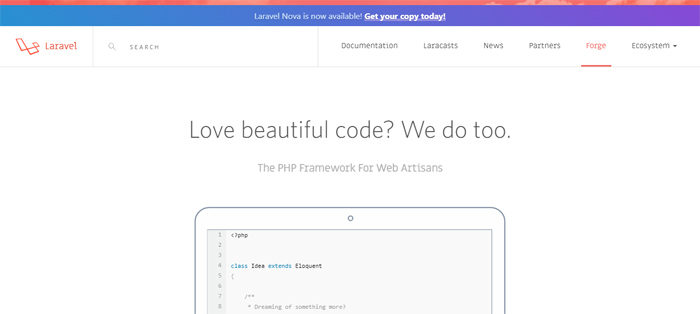
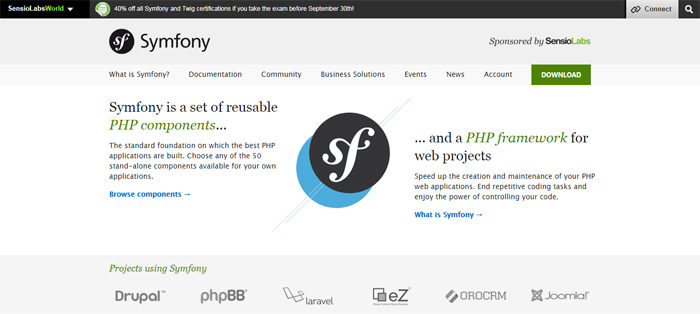
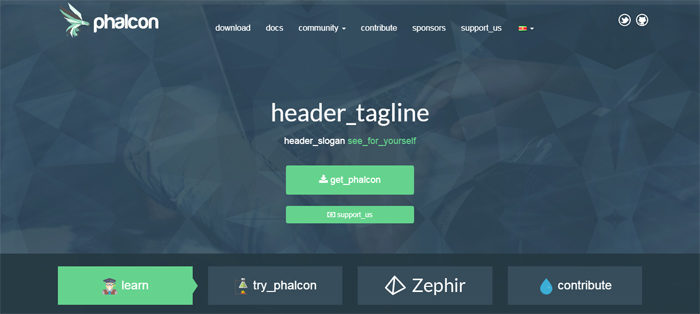
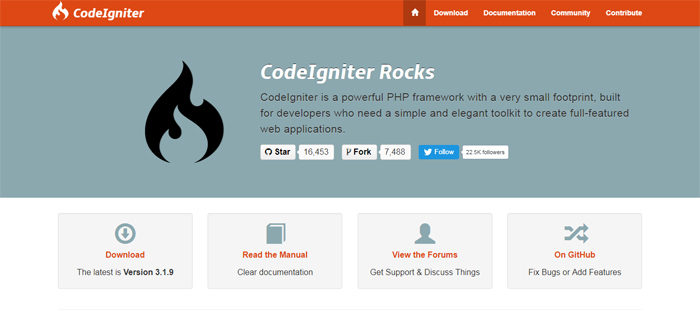
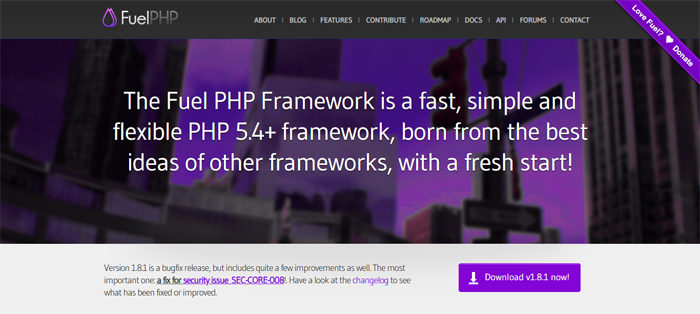
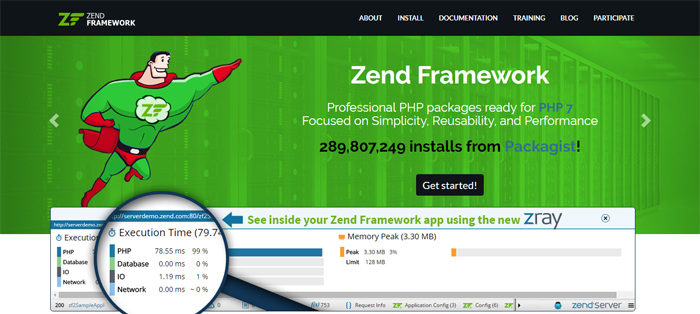
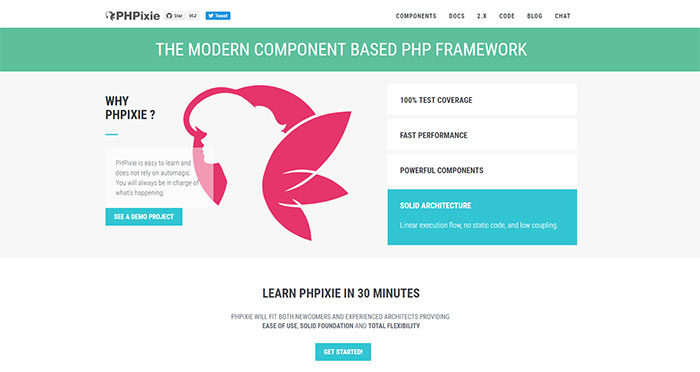
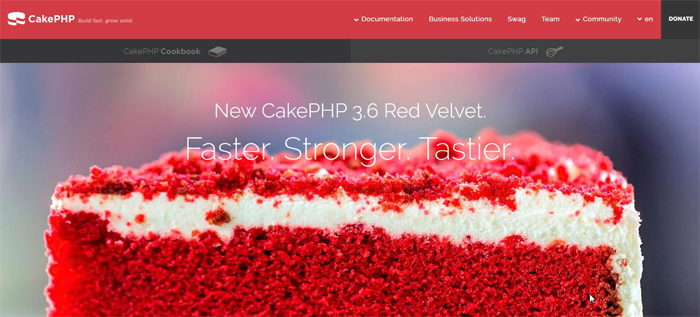
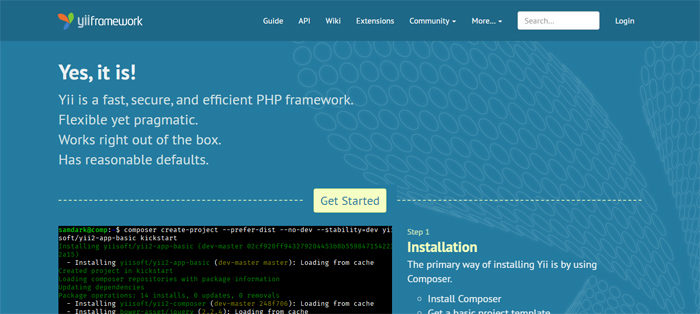
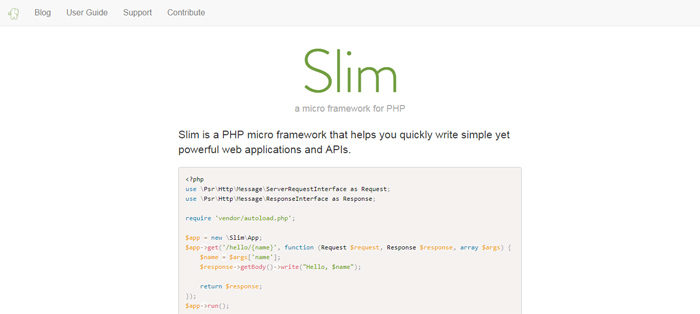

No comments:
Post a Comment